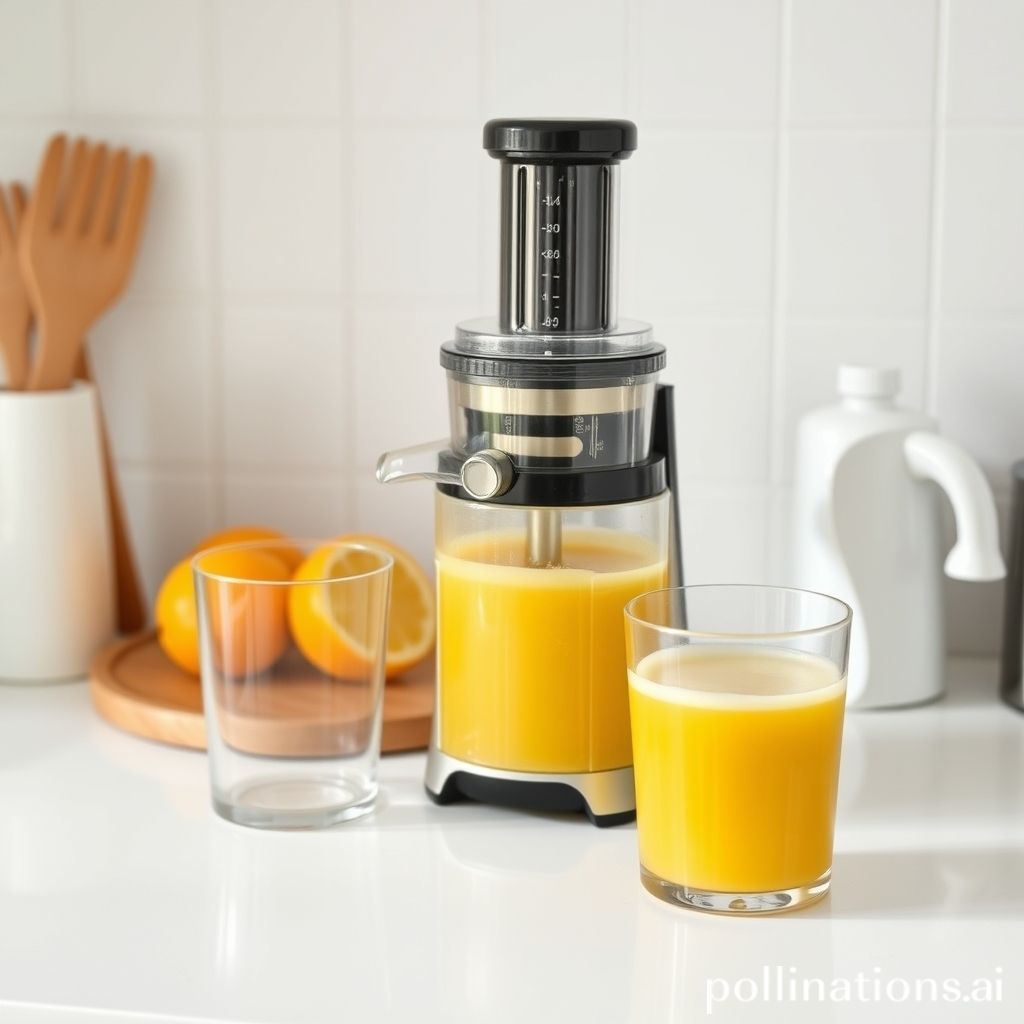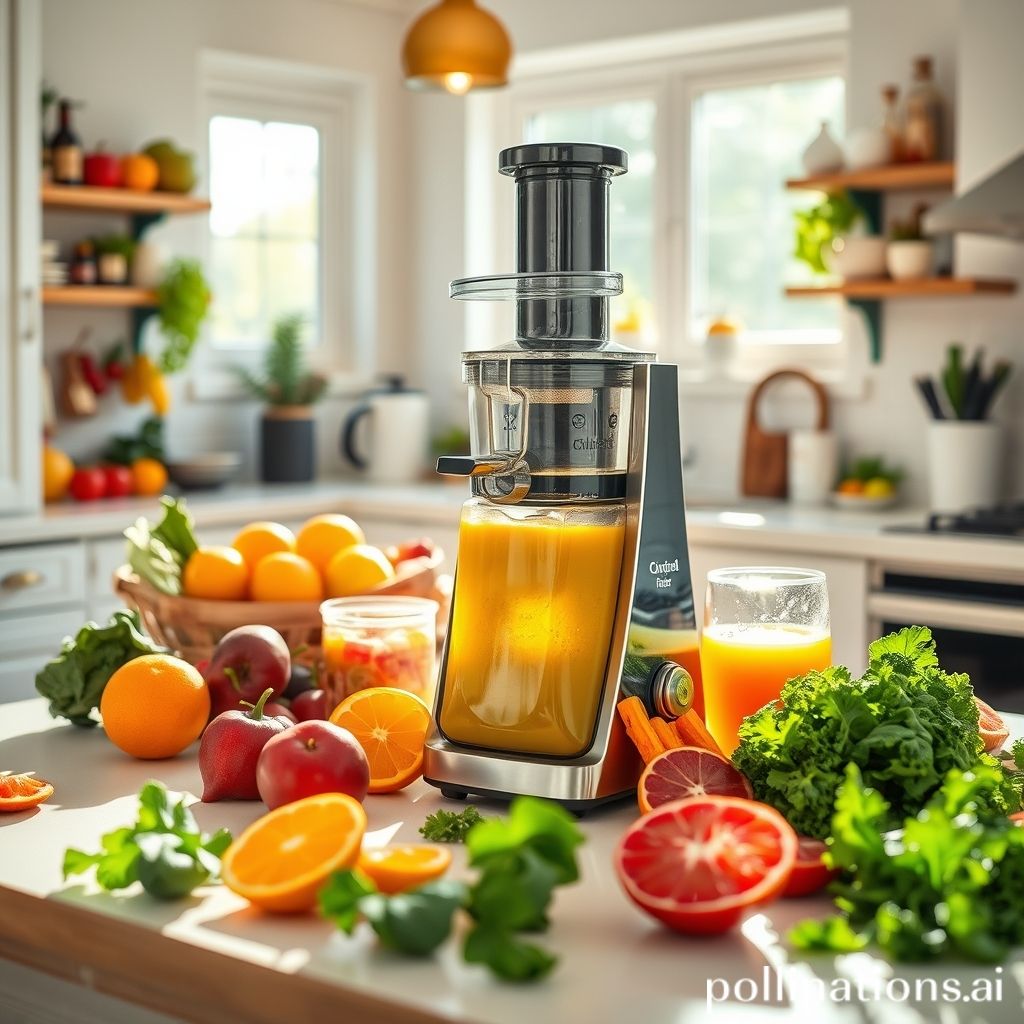Do You Clean Your Juicer Out After Every Use?
[su_note note_color=”#fb8e00″ text_color=”#000000″ radius=”12″]
Smoothies isn’t just about blending fruits and vegetables – it’s about discovering a delicious and refreshing way to enjoy them. Like a burst of flavor in a glass, you can savor the goodness of nature with every sip.
In this article, we will explore the importance of cleaning your juicer after every use. Many people are curious about the best practices for maintaining their juicer’s cleanliness and whether it is necessary to clean it thoroughly after each juicing session. Join us as we delve into the reasons behind this essential task and uncover tips to keep your juicer in top shape.
[su_box title=”
[/su_box]

Benefits of Cleaning Your Juicer After Every Use
1. Preventing Bacterial Growth
Cleaning your juicer after each use is essential for preventing the growth of bacteria. When you juice fruits and vegetables, their natural sugars and residues can adhere to the juicer’s parts, creating an ideal environment for bacteria to thrive. Without proper cleaning, these bacteria can multiply and contaminate your next batch of juice, posing a health risk.
Thoroughly cleaning your juicer after each use eliminates any potential bacteria, ensuring that your juice remains safe and hygienic. Regular cleaning also prevents the accumulation of mold or mildew, which can further compromise the cleanliness of your juicer.
2. Maintaining Optimal Juicer Performance
Regularly cleaning your juicer after each use helps maintain its optimal performance. Over time, leftover pulp, fiber, and juice residues can build up in the juicer’s components, such as the filter or blade. This buildup can obstruct the proper functioning of the juicer, leading to decreased efficiency and a lower juice yield.
By thoroughly cleaning your juicer, you remove any debris that could clog the machine and affect its performance. This ensures that your juicer continues to extract juice effectively, resulting in smoother operation and improved overall performance.
3. Enhancing the Taste and Quality of Your Juice
Cleaning your juicer after each use improves the taste and quality of your juice. Residual pulp and juice left inside the juicer can mix with fresh ingredients, altering the flavors and aromas of your juice. This can result in an unpleasant taste or an imbalance of flavors.
Furthermore, a dirty juicer may transfer unwanted odors or flavors from previous juices to your new batch. By thoroughly cleaning your juicer, you ensure that each juice you make has a fresh, clean taste, allowing the natural flavors of the fruits and vegetables to shine through.
[su_highlight background=”#f6b40f”]Expert Tips:
1. Clean your juicer after each use to prevent bacterial growth and contamination.
2. Regular cleaning maintains optimal juicer performance and efficiency.
3. Enhance the taste and quality of your juice by thoroughly cleaning your juicer.[/su_highlight]
Step-by-step guide to cleaning your juicer
1. Taking apart the juicer components
To effectively clean your juicer, start by correctly disassembling it. Follow the manufacturer’s instructions to safely remove all detachable parts, such as the pulp container, juice collector, and filters.
2. Rinsing away excess pulp and juice
Prior to deep cleaning, it’s essential to rinse off any remaining pulp and juice from the juicer components. Use running water or a gentle spray to remove the loose residue, ensuring that no leftover particles remain.
3. Soaking the parts in warm soapy water
Fill a sink or basin with warm water and add a mild dish soap. Submerge the disassembled juicer parts in the soapy water and let them soak for a few minutes. This step helps loosen any stubborn residue and makes the cleaning process easier.
4. Scrubbing and rinsing thoroughly
Using a soft brush or sponge, scrub each juicer part to remove any remaining debris. Pay close attention to hard-to-reach areas and filters, making sure that all surfaces are thoroughly cleaned. Rinse the parts under running water to remove any soap residue.
5. Drying and putting the juicer back together
After cleaning, carefully dry each juicer component with a clean towel or allow them to air dry completely. Once dry, reassemble the juicer according to the manufacturer’s instructions, ensuring that all parts fit securely.
| Step | Description |
|---|---|
| 1. Taking apart the juicer components | Follow the manufacturer’s instructions to safely remove all detachable parts. |
| 2. Rinsing away excess pulp and juice | Use running water or a gentle spray to remove loose residue from the juicer components. |
| 3. Soaking the parts in warm soapy water | Submerge the disassembled juicer parts in warm soapy water and let them soak for a few minutes. |
| 4. Scrubbing and rinsing thoroughly | Scrub each juicer part with a soft brush or sponge to remove remaining debris, then rinse under running water. |
| 5. Drying and putting the juicer back together | Dry each juicer component with a clean towel or allow them to air dry before reassembling. |
Tips for Efficient Juicer Cleaning
1. Clean immediately after use
It is crucial to clean your juicer right after each use to maintain its performance and prolong its lifespan. Leaving the juicer dirty for a long time can lead to the accumulation of pulp, seeds, and residue, making it harder to clean later on.
2. Utilize a brush for hard-to-reach areas
To ensure a thorough cleaning, employ a brush specifically designed for juicers to reach challenging areas. These brushes are usually small with bristles that can effectively remove debris from crevices, mesh screens, and other intricate parts of the juicer.
3. Employ natural cleaning agents like vinegar or lemon juice
Instead of relying solely on harsh chemical cleaners, consider using natural cleaning agents such as vinegar or lemon juice. These substances are environmentally friendly, non-toxic, and effective in eliminating stains, odors, and mineral deposits from your juicer.
4. Avoid using abrasive materials that may harm the juicer
Meanwhile it is vital to clean your juicer thoroughly, refrain from using abrasive materials like steel wool or harsh scrubbing pads. These can scratch the surfaces of your juicer, compromising both its functionality and appearance. Opt for soft brushes or non-abrasive sponges instead.

Common Mistakes to Avoid When Cleaning Your Juicer
1. Failing to Disassemble the Juicer Properly
A common mistake people make when cleaning their juicer is not properly disassembling it. To ensure a thorough cleaning, it is important to take apart all the removable parts of the juicer, including the juicing chamber, feed chute, pulp container, and juice container. This allows for better access to all the nooks and crannies where residue may accumulate.
2. Applying Excessive Force During Cleaning
Using too much force During cleaning your juicer can lead to damage and even cause injury. It is important to handle the parts of the juicer with care and avoid applying excessive pressure. Instead, gently scrub the parts with a soft brush or sponge to remove any residue.
3. Neglecting to Clean the Juicer’s Filters and Blades
The filters and blades of your juicer are essential components that require regular cleaning. Neglecting to clean them can result in clogging and decreased juicing performance. After each use, remove the filters and blades and rinse them thoroughly under running water. Use a brush to remove any stubborn particles.
4. Storing the Juicer Without Proper Drying
After cleaning your juicer, it is crucial to ensure that all the parts are completely dry before storing them. Moisture left on the juicer can promote the growth of mold and bacteria. To dry the juicer, use a clean, lint-free cloth or allow the parts to air dry. Once dry, reassemble the juicer and store it in a clean and dry place.
| Common Mistakes to Avoid |
|---|
| Failing to disassemble the juicer properly |
| Applying excessive force during cleaning |
| Neglecting to clean the juicer’s filters and blades |
| Storing the juicer without proper drying |
By avoiding these common mistakes, you can ensure that your juicer remains clean and in optimal condition for longer. Regular cleaning and proper maintenance will not only extend the lifespan of your juicer but also ensure that you continue to enjoy fresh and healthy juices.
[su_note note_color=”#ea2e0c” text_color=”#ffffff” radius=”8″]Extra Tips: Properly disassemble the juicer, avoid excessive force, clean filters and blades, and ensure proper drying before storing.[/su_note]
Frequency of Thoroughly Cleaning Your Juicer
1. Weekly Thorough Cleaning to Remove Stubborn Residue
Regularly cleaning your juicer is crucial for maintaining its performance and ensuring the longevity of its parts. At the same time it is recommended to clean your juicer after each use, a weekly deep cleaning session is necessary to remove any stubborn residue that may have accumulated over time.
To start, disassemble your juicer and wash each part carefully with warm soapy water. Pay close attention to the filter, cutting blades, and any areas where pulp or juice may have built up. Use a small brush or toothbrush to scrub away any stubborn residue.
Once you have thoroughly cleaned all the parts, rinse them under running water to remove any soap residue. Allow them to air dry completely before reassembling the juicer.
By deep cleaning your juicer on a weekly basis, you can prevent the accumulation of debris, pulp, and bacteria that may affect the taste of your juice and the overall performance of your juicer.
2. Monthly Thorough Cleaning for Proper Maintenance
In addition to the weekly deep cleaning routine, it is recommended to perform a more thorough maintenance session on a monthly basis. This will help ensure that all the nooks and crannies of your juicer are properly cleaned and prevent any potential issues.
During the monthly deep cleaning, you can take the opportunity to inspect the condition of your juicer’s parts. Check for any signs of wear and tear, such as dull blades or cracked filters, and replace them if necessary.
To perform a monthly deep cleaning, follow the same steps as the weekly cleaning routine. In contrast, this time, pay extra attention to hard-to-reach areas and use a mild vinegar solution to remove any mineral deposits that may have accumulated.
Always refer to your juicer’s user manual for specific cleaning instructions and recommendations from the manufacturer.
Conclusion
Regular cleaning is crucial for maintaining the optimal performance and hygiene of your juicer. By cleaning your juicer after every use, you ensure that any leftover residue or pulp is removed, preventing the growth of bacteria and mold.
Additionally, regular cleaning prevents clogging and extends the lifespan of your juicer. It is recommended to follow the manufacturer’s instructions for cleaning and to use gentle cleaning agents to avoid damaging the juicer’s components. Through inclusion this simple practice into your juicing routine, you can enjoy fresh and healthy juices During prolonging the lifespan of your juicer.
Faq about Cleaning Your Juicer
FAQ 1: Should I clean my juicer after each use?
Yes, it is important to clean your juicer after each use. Cleaning your juicer immediately after juicing prevents any residue from drying and becoming difficult to clean later. It also helps maintain the performance and longevity of your juicer.
FAQ 2: Can I clean my juicer in the dishwasher?
It depends on the specific make and model of your juicer. Some juicers have dishwasher-safe parts, Meanwhile others require handwashing. Refer to the user manual or manufacturer’s instructions to determine the appropriate cleaning method for your juicer.
FAQ 3: How often should I replace the juicer’s filters?
The frequency of filter replacement varies depending on the juicer model and usage. Generally, it is recommended to replace the juicer’s filters every 3 to 6 months or as specified by the manufacturer. Regularly inspect the filters for wear and tear, and replace them if necessary to maintain optimal juicing performance.
FAQ 4: Can I use bleach or harsh chemicals to clean my juicer?
No, it is not recommended to use bleach or harsh chemicals to clean your juicer. These substances can potentially damage the juicer’s parts and leave harmful residues that may affect the taste and quality of your juice. Instead, use mild dish soap and warm water to clean your juicer thoroughly.
FAQ 5: Is it necessary to deep clean my juicer if I use it daily?
Yes, it is necessary to deep clean your juicer if you use it daily. Even if you rinse it after each use, certain parts like the juicing screen and pulp container may accumulate buildup over time. Regular deep cleaning ensures optimal performance, prevents clogging, and maintains the hygiene of your juicer.
Read Similar Post:
1. Juicing Whole Apples in Your Breville: Is it Safe and Effective?
2. Juice Extractor vs Citrus Juicer: Unveiling the Key Differences




